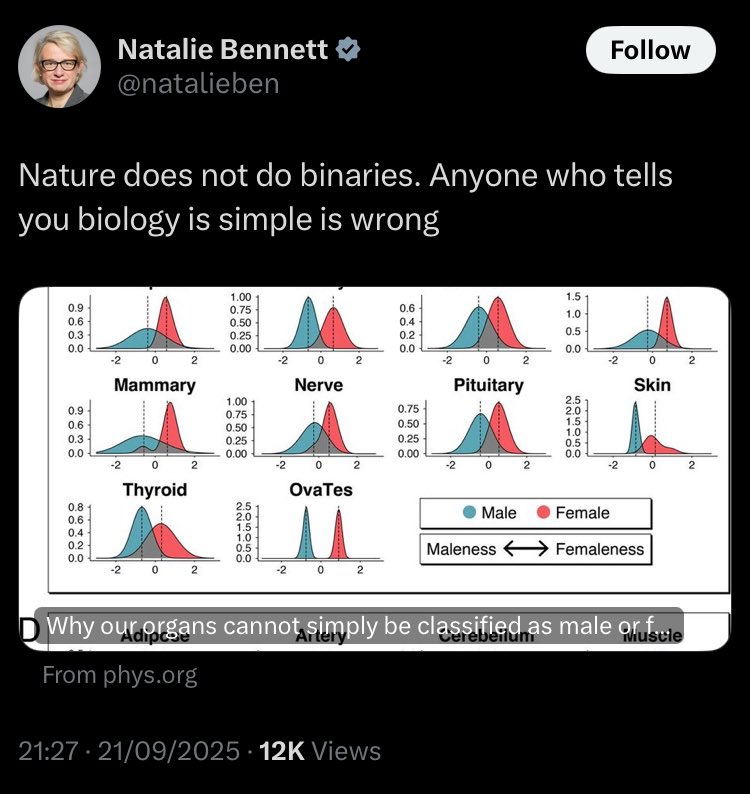With this comment, Peter demonstrates the disconnect of understanding between what sex is and how sex is expressed.
Here follows some cutlery.
Here follows some cutlery.
https://twitter.com/peterjukes/status/1442322236258627584
This is a knife. It’s function is to Cut Stuff.
This knife is relatively blunt and tame-looking. I wouldn’t recommend peeling an apple with it.
This knife is relatively blunt and tame-looking. I wouldn’t recommend peeling an apple with it.

Here is another knife, which Cuts Stuff.
This is a beast of a knife. You could peel an apple with this. And your fingers, if you’re not careful.
This is a beast of a knife. You could peel an apple with this. And your fingers, if you’re not careful.

This is another fork, and it Spears Stuff.
It has a different number of Spearing Things to the fork before. No worries, it still works just as well. I wouldn’t use it to Spear Peas en route to mouth though, unless you want disapproving looks and immediate danger to eyes.
It has a different number of Spearing Things to the fork before. No worries, it still works just as well. I wouldn’t use it to Spear Peas en route to mouth though, unless you want disapproving looks and immediate danger to eyes.

This is a broken knife. By altering your technique, you could still Cut Stuff with it, but it’s suboptimal function.
This is not a fork. It is not More Fork than an intact knife.
This is not a fork. It is not More Fork than an intact knife.

This is a broken fork that likes heavy metal.
It still works to Spear Stuff.
It doesn’t Cut Stuff. It is not a knife.
It still works to Spear Stuff.
It doesn’t Cut Stuff. It is not a knife.

This is a knork, combining both the functions of Cutting Stuff and Spearing Stuff in one implement.
Easier to make knorks rather than separate knives and forks, but total functionality of knorks is more limited than having two separate implements.
If it works for you, great.
Easier to make knorks rather than separate knives and forks, but total functionality of knorks is more limited than having two separate implements.
If it works for you, great.

One could cut channels into a blunt knife and turn it into a fork. Maybe one could also sharpen a single-tined fork to render it a knife.
Switching from Cutting Stuff to Spearing Stuff (or vice versa) is a functional switch.
No pictures of this process were available.
Switching from Cutting Stuff to Spearing Stuff (or vice versa) is a functional switch.
No pictures of this process were available.
Cutting Stuff and Spearing Stuff are two sub-functions that form the wider function of Eating Stuff.
The purpose of this analogy is to demonstrate that one can elucidate two different and complementary functions, *regardless* of how those functions are split (or not) across implements. One can elucidate function even in broken implements.
There is a spectrum of implements. There is no spectrum of function.
There is no implement that Scoops Stuff in the system of sex.
There is no implement that Scoops Stuff in the system of sex.

This is a pair of chopsticks. They have no discernible differential function.
Left hand, right hand, whichever you use for whatever piece of food, it makes no difference.
They get the job done, but imagine if you made one a little pointier and one with a flatter edge…
Left hand, right hand, whichever you use for whatever piece of food, it makes no difference.
They get the job done, but imagine if you made one a little pointier and one with a flatter edge…

• • •
Missing some Tweet in this thread? You can try to
force a refresh








